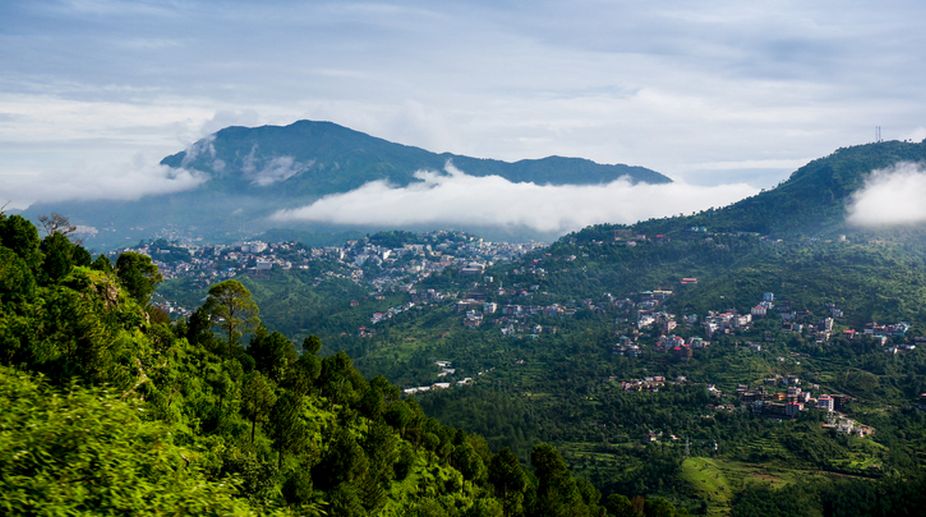On my trip to the divine Himachal Pradesh this year, I came across the chimerical land of oblivion—a hamlet called, Mudh. Located 14,500 feet in the Pin valley with a population of around 200, Mudh is occasionally interspersed with spurts of pink blossoms called Sia Mentok. Animals outnumber people there. Horses neigh and cows moo from stone-walled pens.
From the town of Kaza or Kaja, the sub-divisional headquarters of the remote Spiti Valley in the Lahaul and Spiti district of the state of Himachal Pradesh in the Western Himalayas of India, Mudh is approximately 30 kilometres away. Generally, one has to hire a cab from Kaza and after covering 13 kms, there is a bridge and from there, one has to take the right turn and travel another 15 kms. Mudh village is also the gateway to several trekking routes such as Pin Parvati Pass Trek, Pin Bhaba Pass Trek, Pin Valley National Park, Parang La Trek, Pin to Lingti Valley and a Village Trek. There are several home stays available in Mudh. Tara Home Stay is a delightful option which provides necessary facilities such as Internet, laundry and services for trekking to Baba Pass and Pin Parvati Pass. Other home stays are namely Delek Home Stay and Dikit Home Stay among a few others. However, there is a dearth of electricity in Mudh. People are entirely dependent on solar energy. One has to charge up their phone, camera or any other electrical device from the preceding destination.
The cynosure of Mudh is the Pin Valley consisting of the Pin River. From there, in order to trek to Baba Pass, it has to be crossed before 15 September to avert snowfall and other related risks. Ideally people should visit the place before the first week of October.
Geographically, Mudh is the last district of Himachal Pradesh. The main occupations of the people are predominantly farming and running home stays. The dwellers lie much below the poverty line. There is also no educational institute to eradicate illiteracy. Yet the people of Mudh are full of warmth and their hearts brim with the milk of human kindness. Therein lies the essence of Mudh.
There is neither any bank nor post office or hospital anywhere. In short, there are no amenities of the so-called “modern world”. Only BSNL sim cards work there but the frequency level is very low. The food available is momo, masala tea, Tibetan Pizza and so on. The Tibetan Pizza nevertheless, is an innovative, scrumptious and appetising native dish prepared with several mouthwatering ingredients and one of its secret ones is love —that’s what makes it delectable and instantly brings a smile on one’s face!
The village of Mudh is wholly surrounded by the Pin River. The condition of its roads is good as most are metal albeit narrow. Hence, one gets to watch mesmerising sceneries, snow-peaked mountains, in short a palpable picturesque view without a glitch.
From Mudh, people can visit Dhankar monastery, a phenomenal site of Himachal Pradesh. As per old beliefs, Dhankar village geographically, is situated in the form of a lotus flower whose petals are formed by eight mountains, which surround it from different sides. These mountain ranges are believed to be abodes of various local Gods or devtas. The first ruler of Spiti, King Nimagon and his son, Dichok Gon, laid the foundation of the Dhankar fort and monastery and consequently built them simultaneously. All religious activities were conducted from the monastery. The monastery follows the Gelukpa order main where the presiding deity is Khando Chokyong.
After Kye Monastery or Kye Gompa, Dhankar is the biggest monastery of Spiti Valley and a religious training centre for Lamas, which reportedly had 100 monks in 1855. The monastery built in the seventh century, is the second highest in the world. Perhaps the cynosure of Dhankar Monastery is the ancient, immortal Buddhist paintings which have fortunately survived the ravages of time.
Mudh, particularly struck my fancy due to the sublime innocence and unsullied purity, noticeable amid nature and in the countenances of the otherwise marginalised, segregated, poverty-stricken dwellers. Albeit often involved in hard labour, there is an effortless smile glued on their faces with absolutely no hint of fatigue or languor, which is remarkable! As I flew back to Kolkata, I carried in my heart, a host of enchanting memories —a mélange of scenic beauty and serene divinity.
At times I crave to revisit Mudh, the hamlet providentially known to a handful and unarguably, the elixir of everlasting, pristine innocence.











